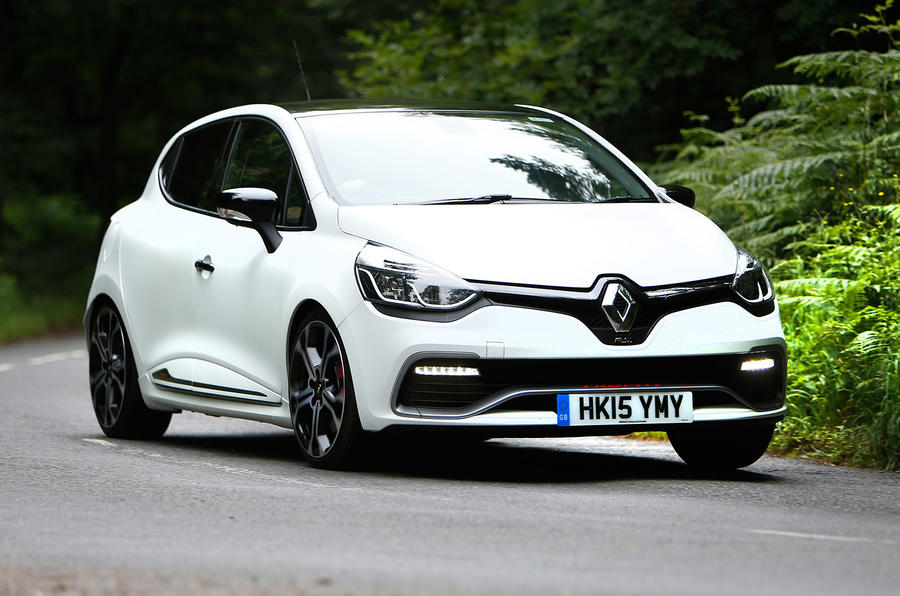What is it?
It’s fair to say that, thus far, the current iteration of the Clio RS has been a disappointment. Previous to it, four generations (five if you include the Williams) of the Renaultsport-fettled supermini were imperious, successive class leaders, and most an object lesson in fast and cheap fun. Their replacement managed to be none of these things, saddled as it was with too many doors, too little power and a fun-dampener of an EDC dual-clutch automatic gearbox.
Its shortcomings, one suspects, were not lost on the engineers in Renault’s famed motorsport division, because many of them have been seen to in this, the 220 Trophy version. It’s still a five-door and still an automatic, but the '220' part of the name refers to a 10% power hike bestowed on the car’s now Euro 6-compliant 1.6-litre turbocharged petrol engine, the new 217bhp output distinguishing it from the 197bhp variant still below it in the range pecking order.
The extra power comes courtesy of a marginally larger blower and an engine remap. An increase in boost pressure delivers more peak torque, too - 192lb ft at 2000rpm. It's an improvement so crucial to the Clio’s drivability that it migrates to the cheaper 200 version as well. Exclusive to the Trophy, however, is a ‘substantially recalibrated’ EDC ’box, which now shifts 50% quicker than before, along with a bespoke chassis set-up.
This includes substantially firmer springs, the rear twist beam having been stiffened by 40%, with dampers to match. The steering ratio has been reduced, too, for better directness, and the standard 18in wheels teamed with Michelin Pilot Super Sport tyres, for better traction. There’s still no proper limited-slip differential (Renault’s RS Diff being an electronic emulator), but there is launch control and the potential for 47.9mpg economy if you go nowhere near the former.
What's it like?
To look at, lower. Previously, even in Cup format, Renault barely dropped the Clio at all. Here, the height reduction is a more substantial 20mm at the front and 10mm at the back, making the Trophy a much squatter prospect and even more fetching in a special matt white colour scheme that adds both a gloss black roof and £1300 to the bill. Extra badges inevitably feature, too, and inside there’s a leather-bound steering wheel to go with some carbonfibre-effect trim bits.
Everything else around you remains the same, including the dull, hollow clunk of a gear selector more suited to a worn-out SUV than a new supermini. Renault has reduced the travel of the associated column-mounted paddles by 30% but, unfortunately, there’s still no crispness or click to them, just a gummy ‘meh’ of wilting resistance.
This lack of fingertip fulfilment proves all the more frustrating because at the business end both up and downshifts do indeed possess far more zip, which, more happily, proves to be a merit of the Trophy in general. One of the turbocharged Clio’s most disappointing traits was its inability to feel even remotely brisk when left in plain old auto mode; thanks to the additional torque - and an extra 15lb ft that only the Trophy gets in fourth and fifth - the range-topper feels not only livelier but also easier to get along with.
That’s without trying. Thumb the RS button for its ‘race’ setting (holding it down extinguishes the traction control in manual mode) and the newfound liveliness approaches actual exuberance. The engine’s modestly larger muscle has been further enhanced by a seemingly greater lung capacity, with a revised air intake and exhaust system meaning the four-pot threshes its way to a higher 6800rpm rev limit with rasp and far greater gusto. It's a virtual metamorphosis in a unit that formerly toiled on its way to mediocrity.





































Join the debate
Add your comment
it gets worse
Metallic blue ? Gold wheels.
What RS? and no manual!